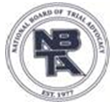Putting Your Life Back Together One Piece at a Time After Hurricane Sandy
The Attorneys and staff at R.C. Shea & Associates would like to take this time to express our deepest sympathy to those affected by Super Storm Sandy. We have personally reached out to all of our clients, friends and colleagues to see if we can be of any assistance; unfortunately we were unable to reach many of our clients. We hope they are well.
With so much devastation that our community has recently endured, we can only hope to reach as many people as possible and offer assistance to those in need.
I have lived in Ocean County all of my life and can assure all of our friends and clients that we will rebuild and make our community even better than it was before. Our thoughts and prayers are with you all.
Below are some steps to take after a flood or other catastrophic loss. Regrettably, when disaster strikes, your home insurer might not live up to your expectations, especially if you have a large claim, based on the results of a 2011 survey of 11,250 subscribers who filed claims in the past few years. The greater the damages, the greater the likelihood that home insurers paid less than expected.
HELPFUL SUGGESTIONS
1. Contact your insurance agent or company representative to report your loss. All flood insurance policies require that you give prompt written notice of your claim. Generally you must present your written claim within 60 days. If you think that you need an extension of time to file your proof of loss, contact FEMA and request an extension. If you are not making a claim under a flood policy then it is not necessary for you to submit your claim in writing. Typically a telephone call will suffice.
2. Separate your property. Your flood policy will likely require that you separate your damaged property from your undamaged property. Do not throw anything away unless your local authorities require you to dispose of same. In this case, take photographs of the property that must be removed. Your insurance adjuster will want to see all damaged property. Contact your insurance company prior to signing any agreement with a restoration company.
3. Make a list of damaged contents. If you have purchased contents coverage then make a list of your damaged contents, listing the quantity of each item, a description, brand name, where it was purchased, its cost, model and serial number. Try to locate any bills and receipts, if possible. We realize that gathering all of this information may not be possible for some, but do the best you can given your circumstances.
4. List all areas of structural damage. As you inspect your property look for possible structural damage and make a note of same to point out to your insurance adjuster. Don’t assume that your insurance adjuster will see everything.
5. “Scoping” your loss. During the initial visit to your property your adjuster will take measurements and photographs and note direct damage or flood damage. This is called “scoping”. Be sure to point out specific areas of concerns and don’t assume that the adjuster will see everything. Be proactive.
6. After the “scope” is finished you will receive a local contact number and you will be informed whether an additional visit is necessary. You will then receive a detailed document called a “damage estimate.” Use the damage estimate as a guide when you ask for bids or repair work from licensed professionals.
7. Payment of your Claim. A check for building property must include any lien holders, such as your mortgage company. So don’t be surprised if your settlement draft is made payable to you and your mortgage company. A check for your personal property will usually be in your name only.
8. Filing a Supplemental Claim. If you notice additional damage to your building property or personal property after filing your claim, you may file a Supplemental Claim. In essence, you will have to repeat the filing process noted above.
9. Public Adjusters. To find a public adjuster, go to the website of the National Association of Public Insurance Adjusters, at napia.com. Look for references, several years’ experience, and a state license if required.
10. Contacting FEMA. www.fema.gov
Applying for Assistance:
Apply Online at DisasterAssistance.gov
Apply via a smartphone at m.fema.gov
Apply by Phone:
Call 732-505-1212
Call TTY 732-505-1212 for people with speech or hearing disabilities
Search for open shelters by texting: SHELTER and a Zip Code to 43362 (4FEMA). Ex: Shelter 01234 (std rates apply)





